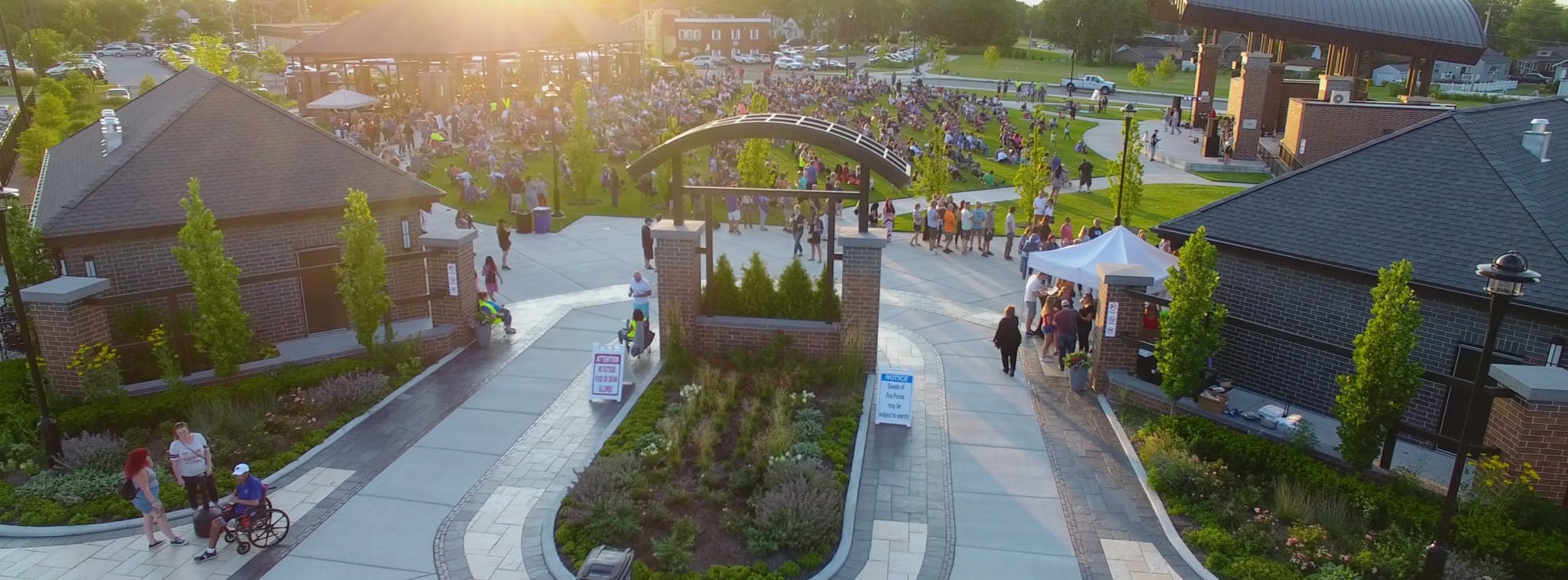FAQs
- Federal Highway Administration
- Federal Transit Administration
- U.S. Department of Housing and Urban Development
- Economic Development Administration
- Illinois Department of Transportation
- Illinois Attorney General
- Illinois Environmental Protection Agency
- Illinois Department of Natural Resources
- Chicago Community Trust
Who is CMAP?
The Chicago Metropolitan Agency for Planning (CMAP) is the regional planning agency for northeastern Illinois, the third largest metropolitan region in the United States.
CMAP serves seven counties, 284 municipalities, and more than 1,200 units of government. Established in 2005, CMAP helps address regional land use and transportation challenges, and coordinates comprehensive planning to improve quality of life throughout northeastern Illinois.
CMAP and its partners continually work to implement ON TO 2050, the long-range plan for northeastern Illinois, carrying through polices and strategies that address transportation, housing, economic development, open space, the environment, and other quality-of-life issues. Visit CMAP's website to learn more.
What is CMAP's Technical Assistance program?
Established in 2010, the Technical Assistance program allows CMAP to partner with communities throughout northeastern Illinois and work with them to develop and implement planning projects that address local needs and advance the principles of ON TO 2050.
The Technical Assistance program has funded more than 200 planning projects, helping communities build capacity, engage underrepresented groups, develop solutions to difficult challenges, and create connections to implementing agencies and funding opportunities.
The program receives funding from numerous sources, including:
What is a Capital Improvement Plan?
A CIP guides long-term infrastructure planning for a municipality. The Village of Lansing's CIP will outline proposed capital projects and investments that it intends to undertake over a specific period — typically five to 10 years.
A CIP helps frame a municipality's decision-making and resource allocation to ensure capital investments align with its strategic goals and priorities.
What projects are included in a Capital Improvement Plan?
A Capital Improvement Plan (CIP) can cover numerous project types, such as road construction and maintenance, water and sewer infrastructure, building construction and renovations, public space improvements, and equipment purchases. A CIP identifies, prioritizes, and plans major projects that can create a long-term impact and require significant funding.
How is a Capital Improvement Plan funded?
A Capital Improvement Plan (CIP) typically is funded through a combination of sources. These sources can include government grants, bond proceeds, dedicated taxes or fees, and general fund revenues. The mix of sources used to fund a CIP depend on the size and scope of the projects identified in the plan.
What is asset management and facilities planning?
Asset management refers to the systematic approach of managing and maintaining a local government's assets, such as buildings, infrastructure, and equipment. This approach maximizes the value of a local government's assets and ensures they are being used effectively and efficiently.
A facilities planning process identifies and analyzes the current and future needs of a local government's facilities to make sure they are adequately serving the community. This planning process helps local governments better prepare for necessary upgrades and renovations, as well as plan for new facilities that can meet future demand.
How will the Village of Lansing use the CIP?
A CIP identifies, prioritizes, and plans major investments in infrastructure, facilities, and equipment that create a long-term impact and require significant funding.
A CIP can include various types of projects, including road construction and maintenance, water and sewer infrastructure, building construction and renovations, and public space improvements. A CIP also considers the ongoing maintenance and repair needs of existing assets, as well as the replacement of aging equipment.
By creating a comprehensive CIP, a municipality can assess its financial resources, identify funding sources, and prioritize capital projects based on need, urgency, and impact.
A CIP also can help coordinate and streamline project delivery by aligning various departments, stakeholders, and the many resources involved in planning, designing, funding, and implementing capital projects.
A well-developed CIP helps a municipality invest in capital projects strategically and thoroughly, ensuring projects provide the greatest benefit to a municipality's constituents and stakeholders.


